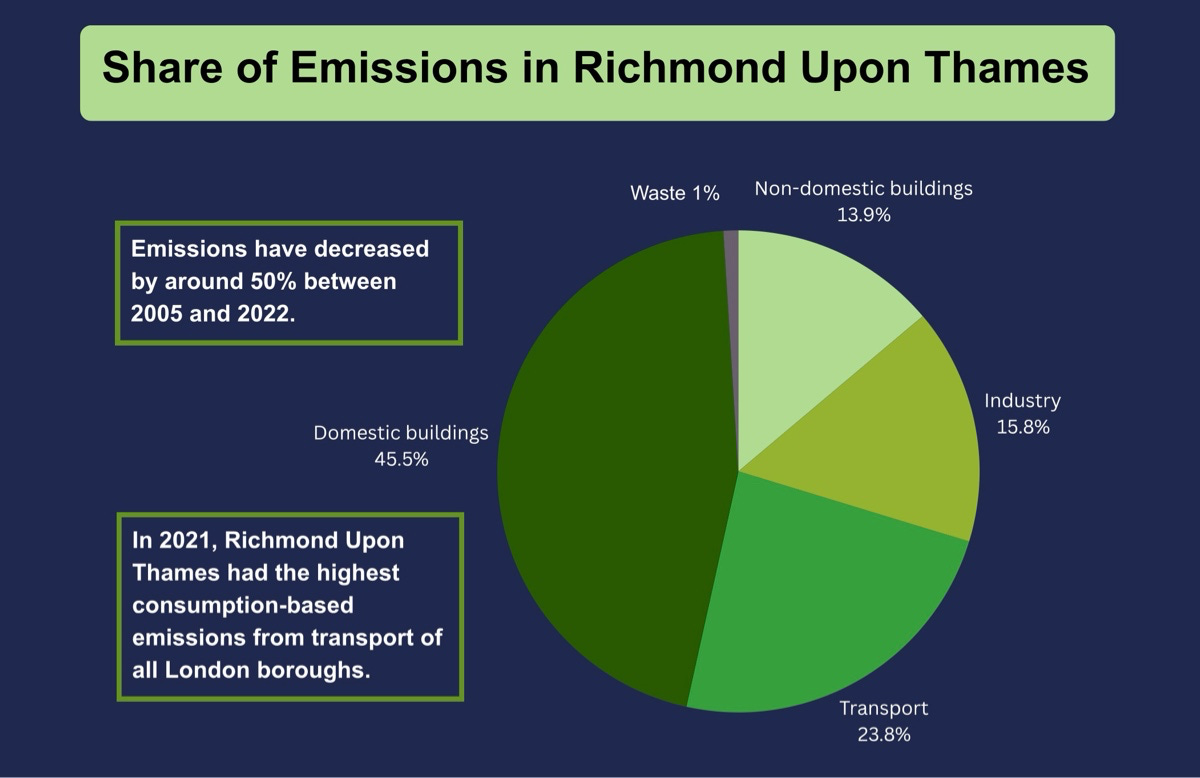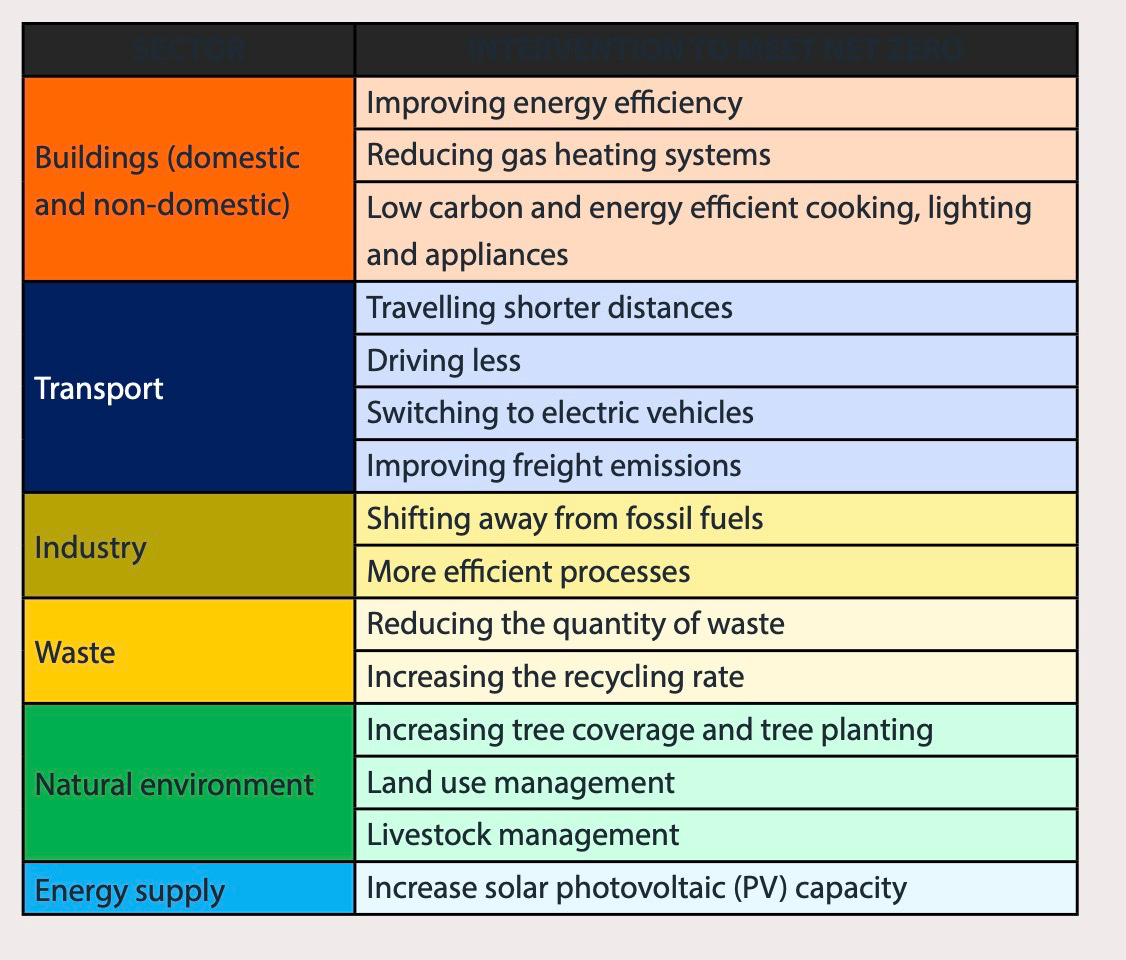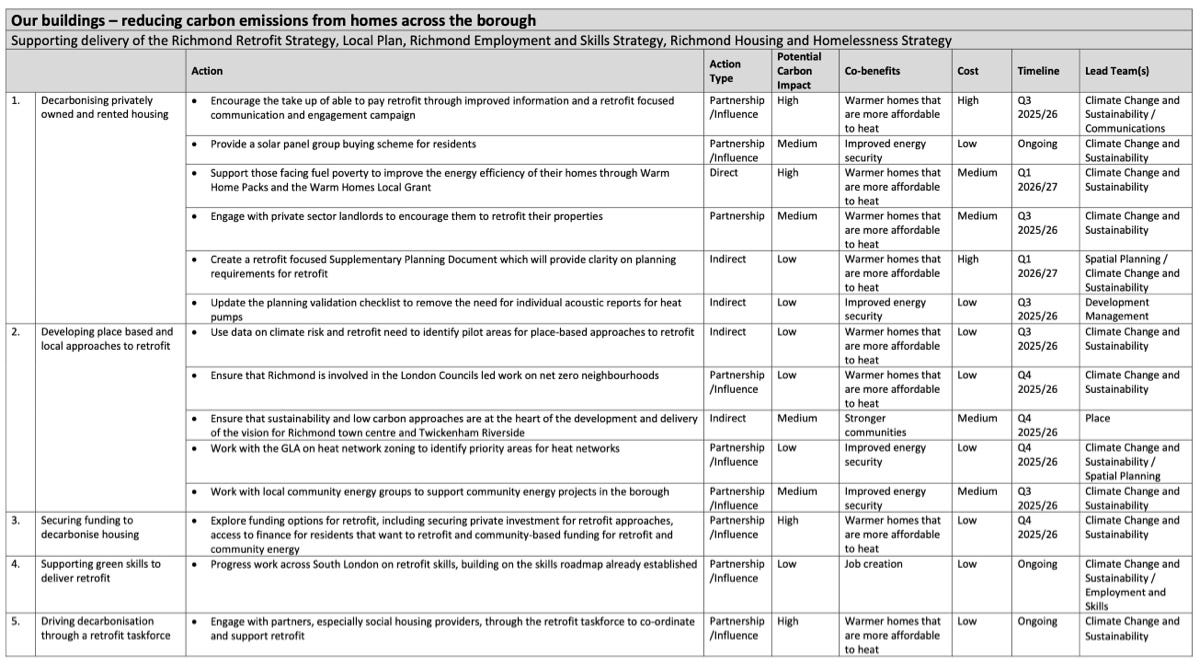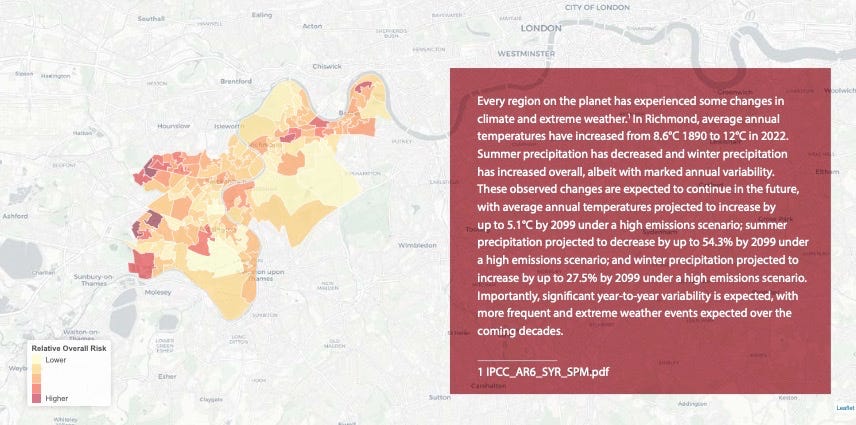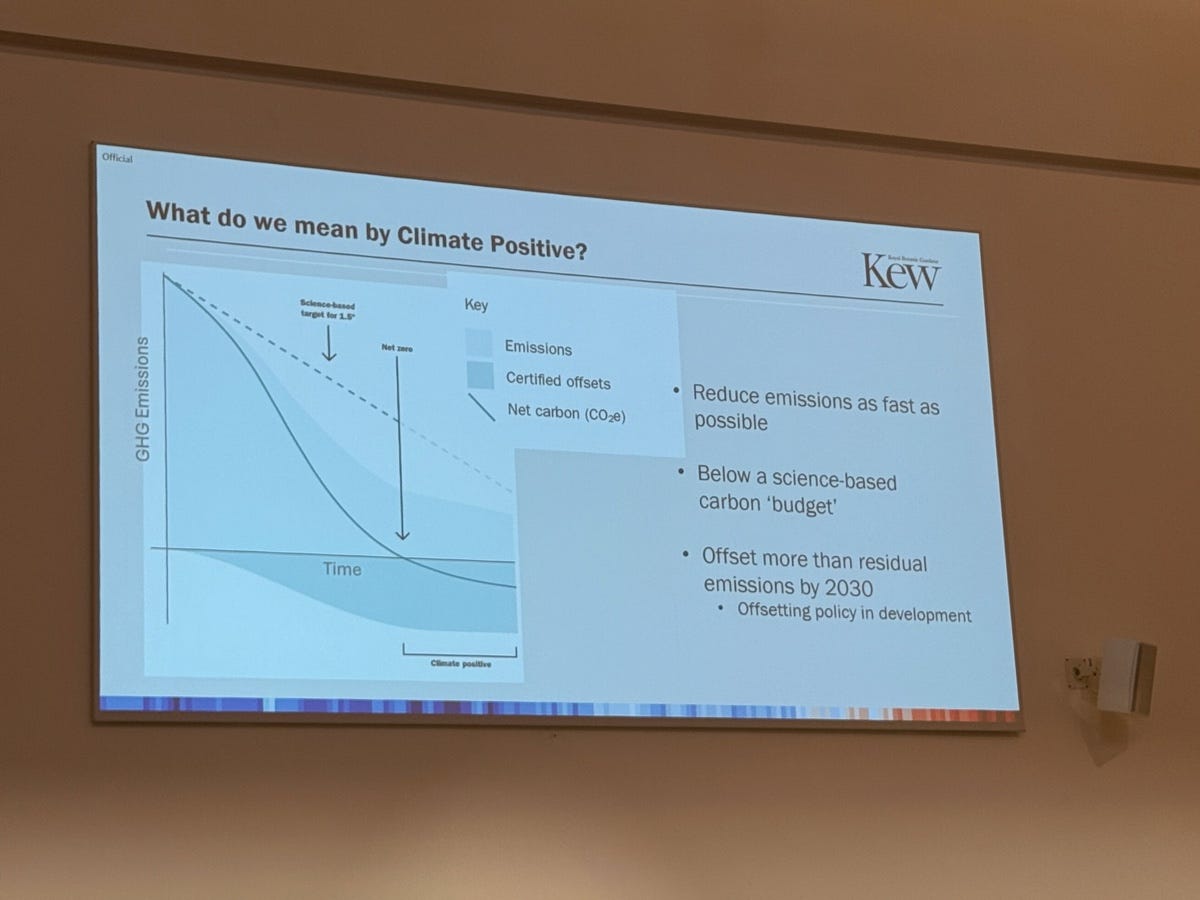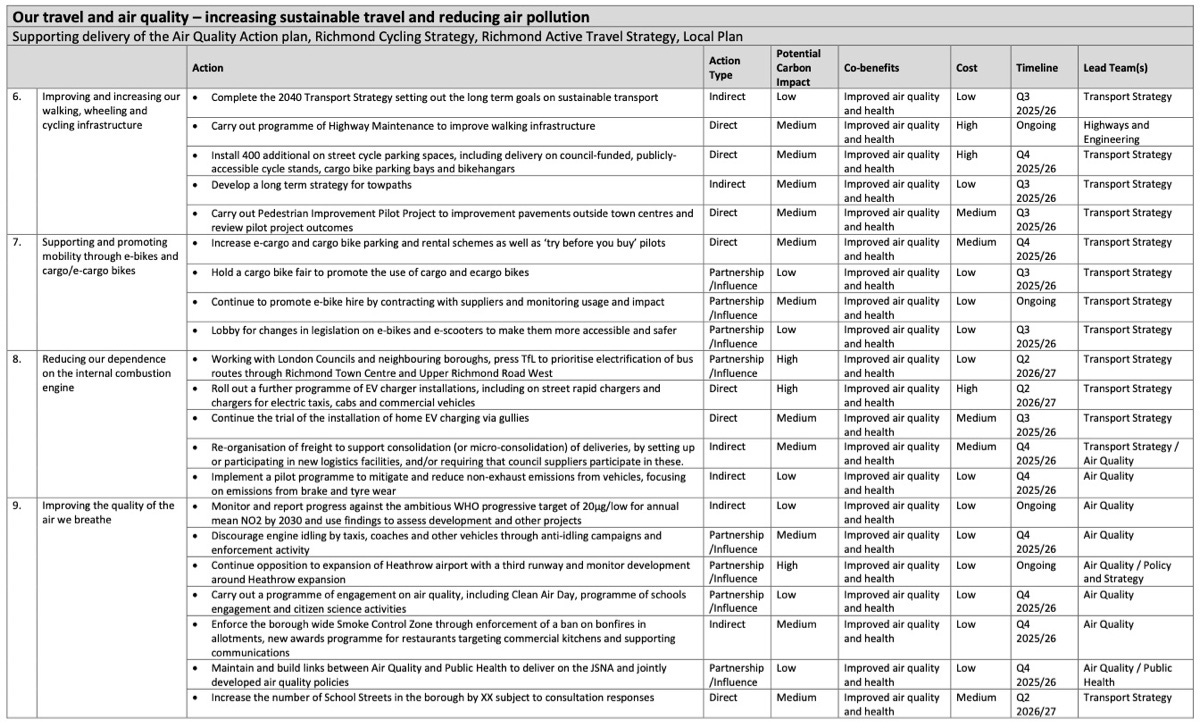By any measure, Richmond’s new Climate and Nature Strategy is a weighty document. The final version stretches to 183 pages—nearly triple the length of the draft published earlier this year—and sets out the borough’s plan for confronting the climate emergency between now and 2030. Its goal? To make sure the borough is net zero by 2043.
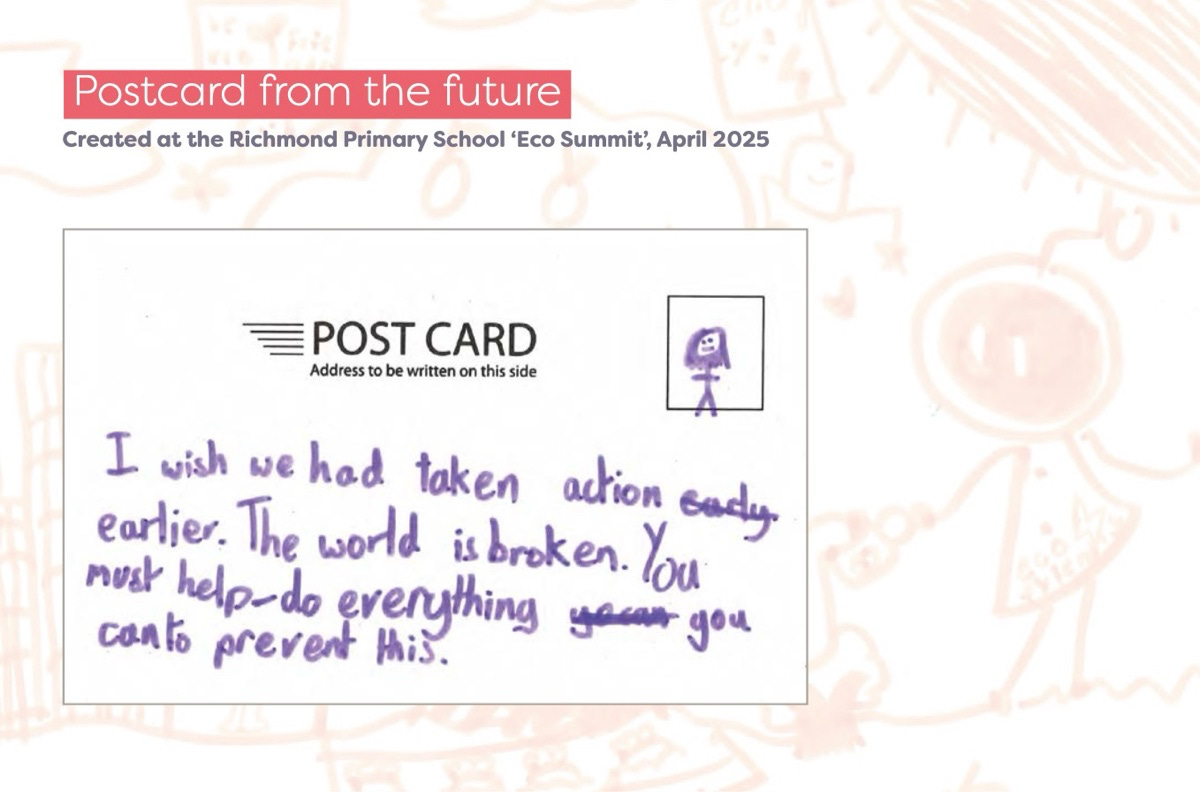
It is reassuringly serious. It outlines where greenhouse gas emissions come from, what can be done about them, and how the council sees its role.
Alongside the main strategy sits the 2025 Action Plan. This second document translates ambitions into something resembling implementation. For each section of the strategy, there’s a corresponding list of near-term actions.
Take buildings, for example. These account for 46% Richmond’s emissions. The plan spells out a series of interventions—some technical, some behavioural—aimed at shifting how homes are heated, insulated, and powered.
The council marked the launch at Duke Street Church, Richmond with a short video,
Notes & thoughts
Let’s start with the flowers. The phrase seems fitting. Richmond Council has made two notable improvements to its draft climate strategy.
First, the action plan brings the strategy to life. Whatever the merits or flaws of specific measures, it provides a framework that feels tangible.
Second, the main presentation, while much longer, explains key ideas more clearly. The details that can seem trivial in isolation work together here in a way that’s easy to grasp. The “laddering” is intact; the big picture doesn’t get lost.
Richmond and climate change
This is a useful diagram. Science based. Red is bad.
This chart characterises risk profile from climate change. across the borough It is worth reading the text box, which ends,
Hotter, wetter with more frequent and extreme weather events expected over the coming decades.
Marquee projects
The launch began with Rachel Purdon, Head of Sustainability at the Royal Botanic Gardens, Kew. Her presence was a reminder that one of the world’s leading centres for plant science and conservation sits just down the road.
Rachel explained Kew, like the council, explicitly connected climate and nature. Kew’s director, Richard Deverel, put it like this. He said Kew aims to
align everything we’re doing to address these enormous global challenges we face as humanity: the biodiversity crisis and the climate crisis.
You can watch Rachel’s presentation - about fifteen minutes long - here.
There’s much to celebrate. Kew have done so much good work in terms of reducing their emissions and adapting their two sites for the climate ahead.
My only criticism is the term climate positive. It’s catchy, but it joins a crowded field of jargon—net zero, low-carbon, carbon neutral—that needs constant explaining which is what this slide attempted,
Kew has standing and it should have used its heft to buttress existing descriptors.
What most people present at the event will remember, however, is the ‘Net Zero Palm House’. Rachel wasn’t allowed to share any details, but the outline was sufficient to create a buzz. The next day, the Palm House renovation project went public.
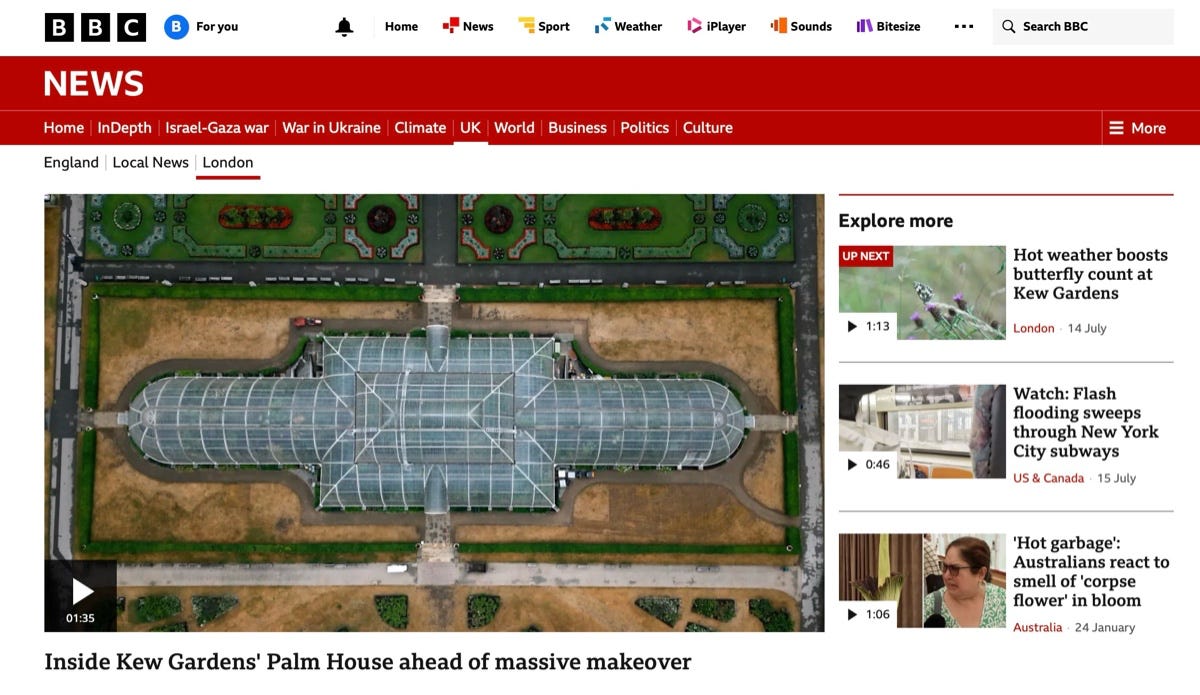
This is a marquee project. And that is the idea I want to discuss.
This type of project plays an outsized role in helping people make sense of major change. I think marquee projects need to display several characteristics including be:
Relatable - physical and concrete, not abstract
Narrative - Marquee projects anchore the narrative, the means by which you explain what's going on to people who are not listening all the time
Memorable - easy to share and repeat accurately
Representative - illustrating the broader change under way
Significant - Major change usually involves several aspcts. A marquee project stands out from the rest.
Barnes and Mortlake have important projects, but few meet this test.
And that points to a problem.
A permanently car-free Hammersmith Bridge would be transformative. But what else is changing to make the best of this. As things stand, nothing. Even after six years of closure, all layers of government are seeing the Bridge is in isolation. The area is in urban aspic. My submission to Richmond council on its Transport Strategy included a question: under what circumstances would Richmond council start planning for a post-car Bridge?
I would make the same criticism of the Mortlake brewery development. The new neighbourhood is a profound change to our area. But it is bounded. New (expensive) homes, (maybe) a new school, new shops. All impressive and yet .. how does it fit with the rest of Mortlake? Maybe Mortlake Mash-Up will help us get to that answer. It is the best hope.
Lest this seems too negative, two positive takes.
If the proposed changes to The Terrace were ever implemented, that would become a marquee project for creating a truly pedestrian-first Barnes.
Meanwhile, Community BlueScapes can point to the changes on Barnes Green. Those changes to the Brook tick every box. Another reason why this is arguably the most impressive of all local developments.
Encouraging housing
This topic is looming ever larger in my mind. That gas boiler - I can see it from where I am writing this story - will need replacing in the next few years.
Local architect Marguerite Murdoch spoke well, practical and aspirational in equal measure. Her session, starting here, suggested that costs are coming down, products are improving, and laws are evolving.
Admittedly, I don’t know much about this space. I am ignorant about retrofitting, air pumps and heat pumps. I need to course correct in the coming months.
Two initial thoughts after reading the strategy and listening to Margerite.
By 2030 Richmond council say
the number of heat pumps and solar panels installed in the borough will have increased exponentially.
The longer-term target is to replace about 77,000 gas boilers across the borough by 2043. In 2024, 3,800 were replaced of which just 72 were heat pumps. True exponential growth - an increase becoming more and more rapid - would be good by 2030 because this is the easiest phase of the initiative.
This line in the Action Plan caught my eye:
Retrofitting our homes with low carbon heating systems and energy efficiency improvements is an essential milestone on the road to net zero. Across the UK fewer than 3% of homes are connected to a heat network and fewer than 1% have a heat pump installed. Richmond boro is typical in that regard. Group purchasing could help—neighbours pooling demand to negotiate discounts. It remains rare for whole-home retrofits, though trials in Lewisham and Haringey show promise.
Meanwhile, Solar adoption has moved faster. Installing photo-voltaic (PV) systems is much easier than delivering coordinated whole-house energy efficiency upgrades. In South Cambridgeshire, one in five households now has a certified renewable installation—a sign of what’s possible when technology is simple and collective buying works.
Underpowered transport proposals
Carbon emissions from transport are 24% of the borough’s emissions, making it the second highest emitting sector in Richmond. 16 (tasteful) PowerPoint slides on the topic result in these 21 actions,
The first action reveals the essential truth. Richmond council’s Transport Strategy is in development, due for completion by the end of the year. The question is, how far will it go? Will political caution shape its limits? With elections ahead, the Liberal Democrats won’t touch measures that might restrict car ownership or driving, fearing a shift in votes to the Conservatives or Reform.
That niggling sense of not quite there can be seen in the document. Look at the last action.
XX are not kisses.
You can download the Strategy and Action and Action using the links below.
There will be more on this story soon.



